Key Facts
- Legumes include foods such as beans, peas, lentils, and chickpeas.
- Legumes are a great source of protein, carbohydrates, and fiber.
- Legumes are a great addition to any dish – from salads to soups
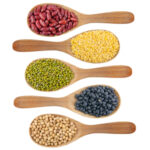
Foods such as beans, lentils, chickpeas, and peas are known as legumes. They are edible seeds grown in pods. Legumes are good sources of protein and fiber, and are used in many different cuisines. In the US, you can find fresh, canned, frozen, or dried versions of most legumes.
What are some examples of common legumes?
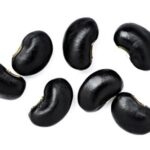
Black beans are medium-sized, oval beans with black skin. They have a slightly sweet flavor and are often used in soups, stews, or served with rice. You may find them included in many Mexican and Latin American dishes.
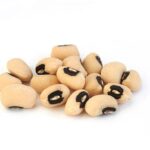
Black-eyed peas are medium-sized, oval beans that are cream-colored with a black dot. They have a sharp flavor and smooth texture. They are usually served with rice or eaten as a side dish.
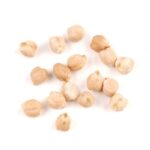 Garbanzo beans, also called chickpeas, are medium-sized, round beans that are beige in color. They have a nutty flavor and firm texture. Garbanzo beans are often used in soups, salads, Indian, Middle Eastern, and Mediterranean dishes such as hummus and falafel.
Garbanzo beans, also called chickpeas, are medium-sized, round beans that are beige in color. They have a nutty flavor and firm texture. Garbanzo beans are often used in soups, salads, Indian, Middle Eastern, and Mediterranean dishes such as hummus and falafel.
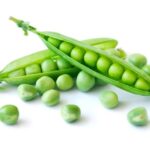 Green peas are small-sized and round, with a sweet and starchy taste. Green peas are often used in pasta dishes, soups, and salads.
Green peas are small-sized and round, with a sweet and starchy taste. Green peas are often used in pasta dishes, soups, and salads.
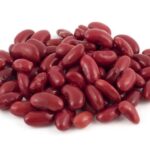 Kidney beans, also called Mexican red beans, are large and kidney-shaped with a strong flavor and soft texture. Kidney beans are used in soups, salads, chili, Creole dishes, and traditional rice and beans.
Kidney beans, also called Mexican red beans, are large and kidney-shaped with a strong flavor and soft texture. Kidney beans are used in soups, salads, chili, Creole dishes, and traditional rice and beans.
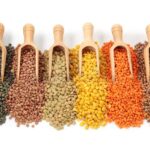 Lentils are circular-shaped seeds. There are five types of lentils, black, brown, red, green, and yellow. Lentils are often used in Indian dishes, side dishes, soups, and stews. Lentils are often available dried and must be fully cooked prior to eating.
Lentils are circular-shaped seeds. There are five types of lentils, black, brown, red, green, and yellow. Lentils are often used in Indian dishes, side dishes, soups, and stews. Lentils are often available dried and must be fully cooked prior to eating.
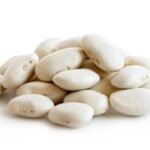 Lima beans are flat, green or cream in color, with a starchy, potato-like taste. They are often used in casseroles, soups, and salads.
Lima beans are flat, green or cream in color, with a starchy, potato-like taste. They are often used in casseroles, soups, and salads.
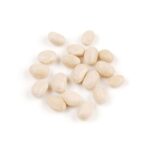
Navy beans are small, white, oval-shaped beans with a mild flavor and powdery texture. They are often used to make soups, and stews.
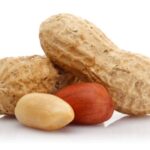 Peanuts, while commonly thought of as a nut, are actually part of the legume family. They are medium-sized and oval-shaped, with a nutty taste. Peanuts are usually eaten as a snack or made into peanut butter.
Peanuts, while commonly thought of as a nut, are actually part of the legume family. They are medium-sized and oval-shaped, with a nutty taste. Peanuts are usually eaten as a snack or made into peanut butter.
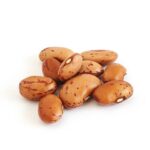 Pinto beans are medium-sized, oval beans with a spotty beige and brown color. They turn completely brown when cooked and are used to make refried beans and other Mexican bean dishes.
Pinto beans are medium-sized, oval beans with a spotty beige and brown color. They turn completely brown when cooked and are used to make refried beans and other Mexican bean dishes.
| Nutrition Facts for Legumes | ||||
| 1/2 Cup Serving | Protein | Calcium | Iron | Fiber |
| Black beans | 8 grams | 42 mg | 2 mg | 8 grams |
| Black-eyed peas | 7 grams | 21 mg | 2 mg | 6 grams |
| Green peas | 4 grams | 17 mg | 1 mg | 3 grams |
| Garbanzo beans (chick peas) | 7 grams | 40 mg | 2 mg | 6 grams |
| Kidney beans | 8 grams | 31 mg | 2 mg | 6 grams |
| Split red lentils | 12 grams | 12 mg | 3 mg | 4 grams |
| Whole green lentils | 12 grams | 25 mg | 2 mg | 9 grams |
| Lima Beans | 7 grams | 16 mg | 2 mg | 7 grams |
| Navy Beans | 8 grams | 63 mg | 2 mg | 10 grams |
| Pinto Beans | 8 grams | 39 mg | 2 mg | 8 grams |
What are some ways to prepare and eat legumes?
- To cook dried legumes, you must first rehydrate or soak them. Add 1 cup of dry beans and 5 cups of water to a covered bowl and soak overnight. For faster preparation, add 1 cup of dry beans to 5 cups of hot water and heat to a boil. Boil for 2-3 minutes and then remove from heat. Let the beans sit covered for at least 1 hour. After your beans have been soaked, drain the water. Add new water to the pot and boil the beans. Bring beans to a boil and simmer until they become tender; this will take about 30-45 minutes. Drain the water again before serving. This process of soaking, draining, and boiling will get rid of some carbohydrates in the beans that we cannot digest and typically cause us to have gas.
- Canned beans are already cooked and usually sit in starchy liquid in a can. These beans should be drained and rinsed prior to serving/eating. You can also warm them up for a few minutes in a pan with water, spices, or sauce.
- Try topping your salads with canned or cooked beans to add protein.
- Hummus, made from garbanzo beans, is great on sandwiches or wraps and makes an excellent dip for veggies. See the recipe below.
- Make your own dip by mixing beans, salsa, and cheese in a dish. Microwave the mixture until the cheese is melted.
Here are three easy legume recipes to try:
Our health guides are developed through a systematic, rigorous process to ensure accuracy, reliability, and trustworthiness. Written and reviewed by experienced healthcare clinicians from Boston Children's Hospital, a Harvard Medical School teaching hospital and consistently ranked as a top hospital by Newsweek and U.S. News & World Report, these guides combine clinical expertise, specialized knowledge, and evidence-based medicine. We also incorporate research and best practices from authoritative sources such as the CDC, NIH, PubMed, top medical journals, and UpToDate.com. Clinical specialists and subject matter experts review and edit each guide, reinforcing our commitment to high-quality, factual, scientifically accurate health information for young people.

